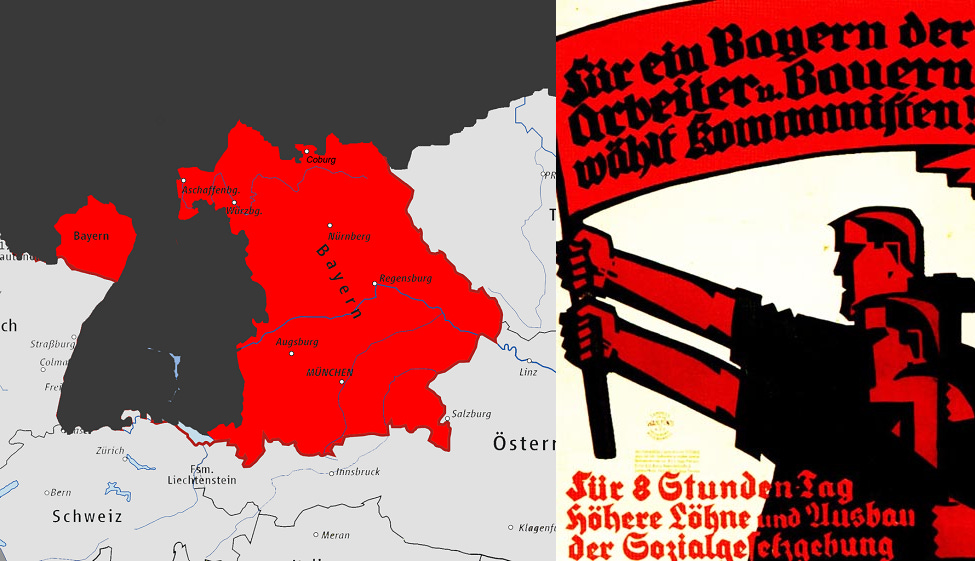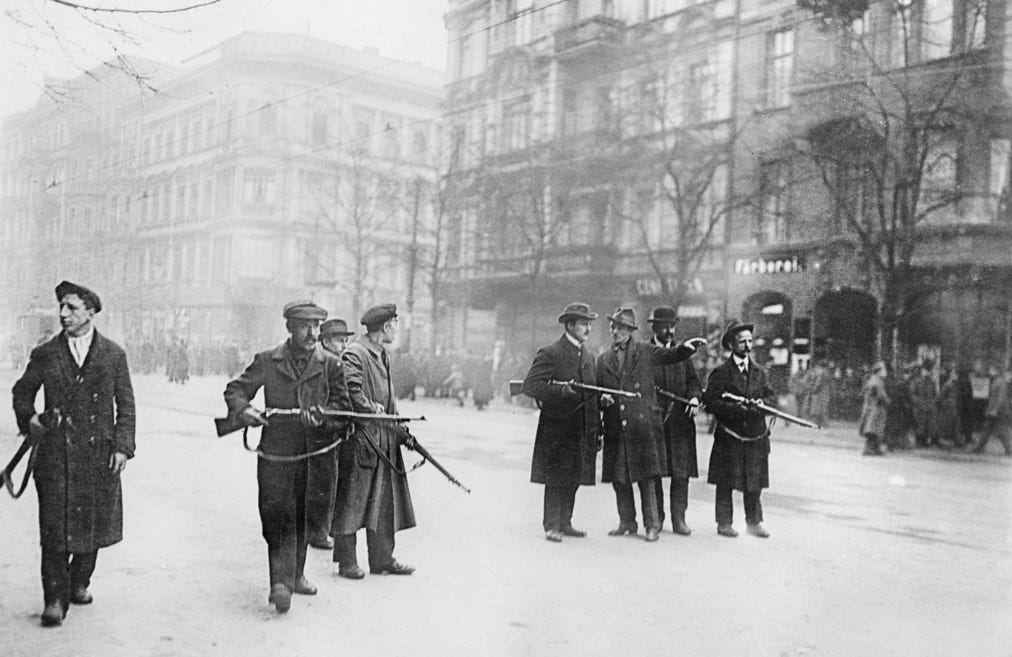Upcoming FbF Book Club Selection: Revolution in Bavaria, 1918-1919 by Allan Mitchell (1965)
Just how close was Bavaria to becoming a Bolshevik State?
We have another three entries to go in the current FbF Book Club (see most recent entry here), but I am already settled on the next book that we will cover: Revolution in Bavaria, 1918-19 by Allan Mitchell.
I have been wanting to cover the immediate post-WW1 period in Germany, as it is rather fascinating and explains why that country went on the path that it eventually did. A lot of people are familiar with the Spartacist Uprising in Berlin led by Rosa Luxemburg and Karl Liebknecht in January of 1919, but fewer people in the English-speaking world are aware of the events in Bavaria and just how close it came to becoming a Bolshevik state. Revolution was in the air everywhere after the successful one in Russia, and Marxists were agitating for it in many places. This series of events in the wake of WW1 gave rise to the “First Red Scare” in the USA and elsewhere.
Originally published in 1965, Princeton University Press describes the book in the following manner:
The tangled affairs in Bavaria at the close of World War I constitute a unique and important part of the early Weimar Republic. This study of the 1918 revolution, based on archival sources such as cabinet protocols and bureaucratic records, traces in detail the overthrow of the Wittelsbach dynasty and the foundation of the Bavarian Republic under Kurt Eisner. It also broadens and balances current understanding of the first Communist attempts to penetrate the heartland of Europe.
This should be a lot of fun. For those wanting to participate, you can find copies of this book online for free if you know where to look. The paperback on Amazon is $53, rather costly for some of you.
I aim to start this series some time between March 9th and March 15th.
If you want to participate and haven’t yet subscribed to this Substack, just hit this button:







Mainstream history these days tends to gloss over the first few years of German history after WW1, skipping ahead to the Nazi Beer Hall Putsch in 1923. This does everyone a disservice, which is why it's important to understand events like the Bolshevik attempts to seize not just Berlin and Bavaria, but other places in Europe as well.
Join us and subscribe!
How and why did interwar right wing dictatorships arise? In large part because of middle class terror of the real threat from communists taking over, and their proven track record of large scale, murderous violence against "class enemies." Lenin unleashed the Red Terror in Russia, and lots of people wanted to do the same in Europe and around the world. Death threats have a way of making people wake up, look for their guns, get organized, and preemptively secure themselves.
I recently read Byline: Ernest Hemingway, a collection of his journalism. A good book. He was in Italy right after World War I. He has one article about that. You can see the hard leftists itching to bring the violence, and the demobilized soldiers and solid citizens who are the targets of the left joining forces and fighting in the streets. Those original disorganized right wing street gangs because Mussolini's boys. Not many people were interested in constitutional democracy. Everyone knew who their enemies were, and wanted to bash their heads in. When it gets to that stage, it is hard to have nice things anymore. The lefties used the tried and true method of starting a fight, then screaming that they are being attacked, to get sympathy in the press, and abroad. Some things never change.
This looks like a good book. Yeah, pricey.